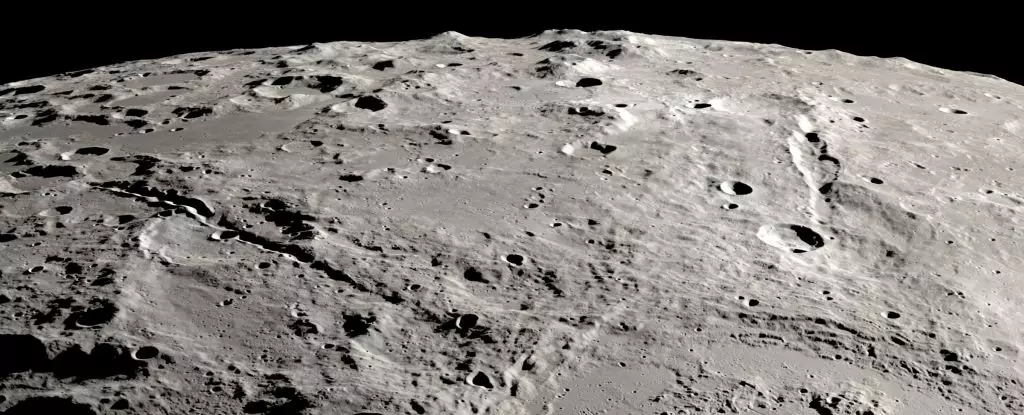The grandeur of Earth’s Grand Canyon is a testament to millions of years of erosive power unleashed by the relentless flow of the Colorado River. Yet, Earth isn’t the only celestial body that boasts breathtaking canyons. The Moon, our closest neighbor in the solar system, features remarkable yet puzzling canyons and gorges that invite scientific scrutiny. Unlike Earth, where liquid water has tirelessly shaped landscapes, the Moon’s canyons pose intriguing questions regarding their formation. Recent scientific findings indicate a dramatic process behind the creation of lunar canyons, suggesting that the forces that sculpted the Moon’s surface were not merely gradual but catastrophic.
Among the Moon’s geological wonders lie Vallis Schrödinger and Vallis Planck, two canyons tracing their origins to a massive impact event. Situated within the vast Schrödinger crater on the Moon’s far side, these two formations diverge from the point of impact, showcasing their striking dimensions—Vallis Schrödinger extending for about 270 kilometers (168 miles) and plunging to depths of roughly 2.7 kilometers, while Vallis Planck stretches 280 kilometers long with depths reaching 3.5 kilometers. Interestingly, although the Grand Canyon eclipses these lunar canyons in length—measuring 446 kilometers—it does so at a shallower depth of 1.86 kilometers.
The sheer scale of these canyons gives a glimpse into the fundamental differences in the geological history of the Moon and Earth. The Moon’s canyons, unlike their terrestrial counterparts, are thought to have formed in mere minutes from the violent forces of impacting debris, a stark contrast to the slow erosion that carved the Grand Canyon.
The mechanisms behind the formation of lunar canyons like those found on the Moon have perplexed researchers. Scientists have hypothesized various theories about their origins, ranging from volcanic activity to meteorite impacts. However, a pivotal study led by David Kring from the US Lunar and Planetary Institute focused on dissecting the dynamics of the ejecta produced by the Schrödinger impact.
Through meticulous analysis using photographs and mapping techniques, the team reverse-engineered the impact scenario, tracking the dispersion of material ejected from the crater. Their findings revealed an asymmetrical dispersal pattern, with significant ejecta being cast away from the lunar south pole. The speed at which the ejecta was expelled—between 0.95 and 1.28 kilometers per second—highlights the tremendous energy derived from the impact. To put this into perspective, the energy required for such an impact was approximately 130 times that harnessed from all nuclear weapons combined on Earth.
The findings from this investigation hold considerable promise for future lunar exploration, particularly with NASA’s Artemis III mission set to land near the South Pole of the Moon. Although the crash that created these canyons occurred approximately 3.8 billion years ago—long before humanity’s existence—its implications resonate today. The models indicate that the majority of ejecta from this ancient impact event could be positioned away from the proposed landing zones for future missions.
This dynamic could benefit astronauts by allowing them better access to ancient, unweathered minerals that lie beneath the surface, providing richer insights into the Moon’s geological history. As humanity prepares for this ambitious venture, scientists are eager to uncover what lies beneath the lunar soil and how it has been shaped by such catastrophic events.
The study of Vallis Schrödinger and Vallis Planck not only sheds light on the profound geological history of our lunar neighbor but also reinforces the complex interplay between celestial events and landscape formation. As we venture back to the Moon with new technologies and courageous astronauts, understanding the Moon’s rugged surface will enhance our appreciation of its past and our potential for discovery. In the quest for knowledge, each canyon, each crater, tells a story of its violent origins, urging us to explore further into the cosmos and our own planet’s history. The insights gained may not only redefine our understanding of the Moon but also guide future explorations of other planetary bodies within our solar system.


Leave a Reply